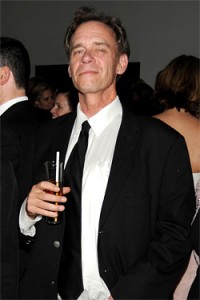National Book Critics Circle board member James Marcus interviewed John Updike in 1998 about his “Bech” novels.
In 1970 John Updike unleashed his Jewish American doppelgänger upon an unsuspecting public in “Bech.” Assembled out of bits of Bellow, Roth, Singer, and Malamud—plus, we were assured, some “Waspish, theological, scared, and insulating ironical” portion of Updike himself—this altar ego was something new for the golden goy of American letters. A dozen years later, Updike revived him for an encore in “Bech Is Back.” And now this “semi-obscure American author” returns for his third appearance in Bech at Bay. Speaking on the telephone from the Knopf offices in Manhattan, Updike chatted with James Marcus about metafiction, aging, and every writer’s propensity to break his own promises.
James Marcus: In an introduction to the recent omnibus edition of the Rabbit novels, you wrote that you always intended Rabbit Angstrom to be “a creature of fear and trembling.” What sort of creature did you intend Henry Bech to be?
John Updike: There’s some fear and a little trembling, but I basically see him as a more buoyant person who has what Rabbit lacked: a vocation. It’s true he doesn’t write very much, and hasn’t published very much. But he’s clearly identified himself as a writer. And I think it’s helpful for a man—and probably a woman, too—to know what you’re trying to be. Anyway, Bech has his moments of panic, even in this book: black moods, you could say. But he carries them off through the act of impersonation. He impersonates a president, he impersonates a visiting diplomat, and so on. All this gives him a certain verve. Read more


